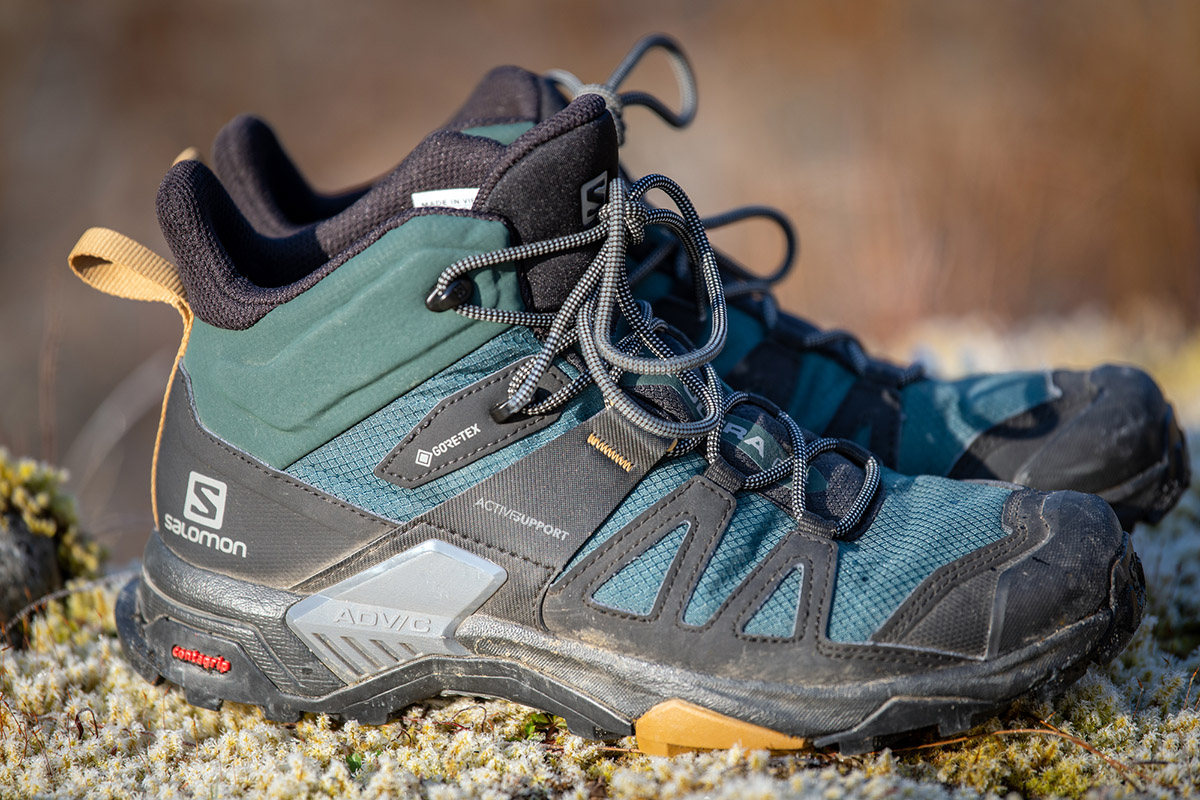
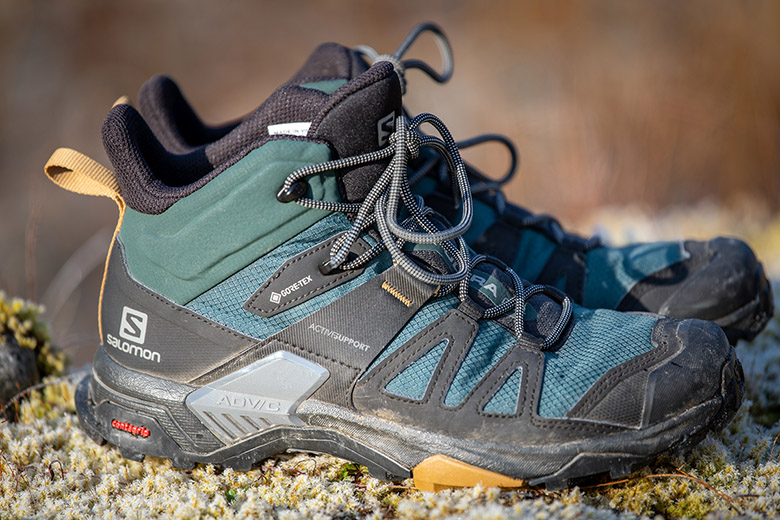
Price: $175
Weight: 1 lb. 11.5 oz. (men’s size 9)
Waterproof: Yes (Gore-Tex)
What we like: Fast, light, flexible, and reasonably priced.
What we don’t: Fairly thin underfoot and not everyone will like the low ankle height.
See the Men's Salomon X Ultra 4 Mid See the Women's Salomon X Ultra 4 Mid
Salomon’s X Ultra lineup is legendary in the world of hiking footwear, and they overhauled the flagship collection in spring 2021. We brought the mid-height version of the X Ultra 4 into Washington’s Hoh Rainforest and found that it retained most of the winning recipe in an even lighter-weight package. The boot still wouldn’t be our first choice for carrying a heavy pack over technical terrain, but for backpackers and hikers who travel light, the X Ultra 4 offers a near-ideal balance of comfort, durability, protection, and traction. Below we break down our experiences with the latest X Ultra 4 Mid GTX. To see how it stacks up to the competition, see our article on the best hiking boots.
For a boot that was clearly designed to keep weight in check, Salomon’s X Ultra 4 Mid GTX offers surprisingly great all-around comfort. My foot slides nicely into the snug heel pocket, which is adequately padded and protective for trail use, and the collar sits right above the ankle and has plenty of squish for all-day comfort. Another contributor is the lacing system, which secures nicely around the foot and has required zero readjusting, even during full days of backpacking. And a true hallmark of the X Ultra’s design that has carried over to the latest model is its nimble feel, which more closely resembles a flexible hiking shoe than a stiff, over-the-ankle boot. Wearing it back-to-back with Salomon’s heavier-duty Quest 4 GTX, the difference was obvious: The light and almost trail runner-like performance made the X Ultra noticeably more adept at jumping across streams, boulder hopping, and sliding up, under, and around downed trees.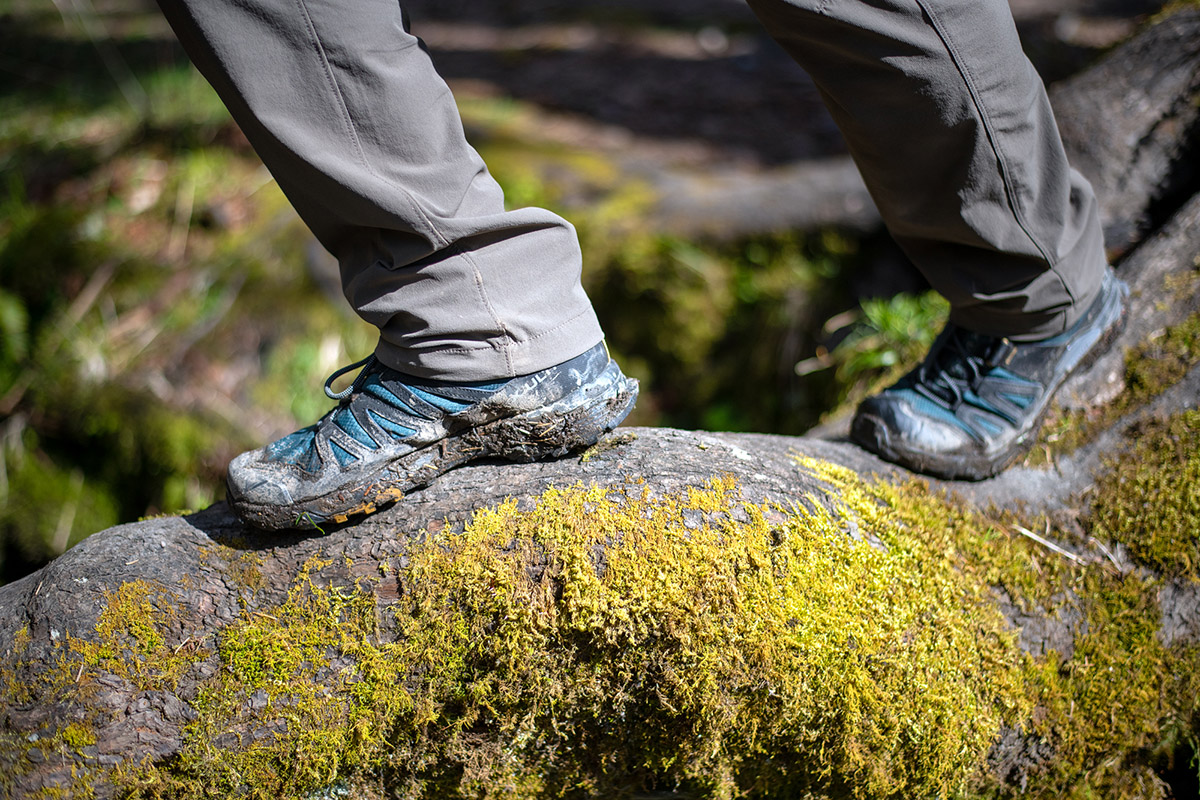
However, there are some inherent downsides to the light and agile feel. Most notably, the X Ultra 4 is noticeably thinner underfoot than the aforementioned Quest 4—and a little thinner even than my prior-generation X Ultra 3—which can lead to foot soreness when hauling a heavy pack over hard and rough surfaces. But to be fair, my feet were still fresh when we rolled into camp after a 10-mile day that featured early-season conditions (including numerous blowdowns) and a trail that was littered with loose rocks. In other words, the levels of protection and cushioning should be completely sufficient for day hiking and most backpacking trips (provided you keep your pack weight down). And a final nitpick is that I initially experienced a light pressure point where the tongue overlaps the collar on the inside of my right ankle. But by the next trip out—and about 5 miles into the test—the discomfort was gone, and it hasn’t been an issue since.
At just 1 pound 11.5 ounces for a men’s 9, my pair of X Ultra 4s easily undercuts Salomon’s listed weight (1 lb. 14 oz.) and the vast majority of hiking boots on the market. In fact, when I put the boots on my scale for the first time, I’ll admit I re-weighed them and then grabbed my low-top X Ultra 4s, as well as the prior-generation X Ultra 3 Mids, just to confirm it wasn’t giving me an inaccurate number. But upon closer inspection, you can clearly see where Salomon trimmed away some weight from the previous model: There’s a pronounced cutout along the back of the collar, and the padding is a bit thinner. But all in all, I think Salomon did a great job retaining the X Ultra’s best qualities while streamlining the overall package.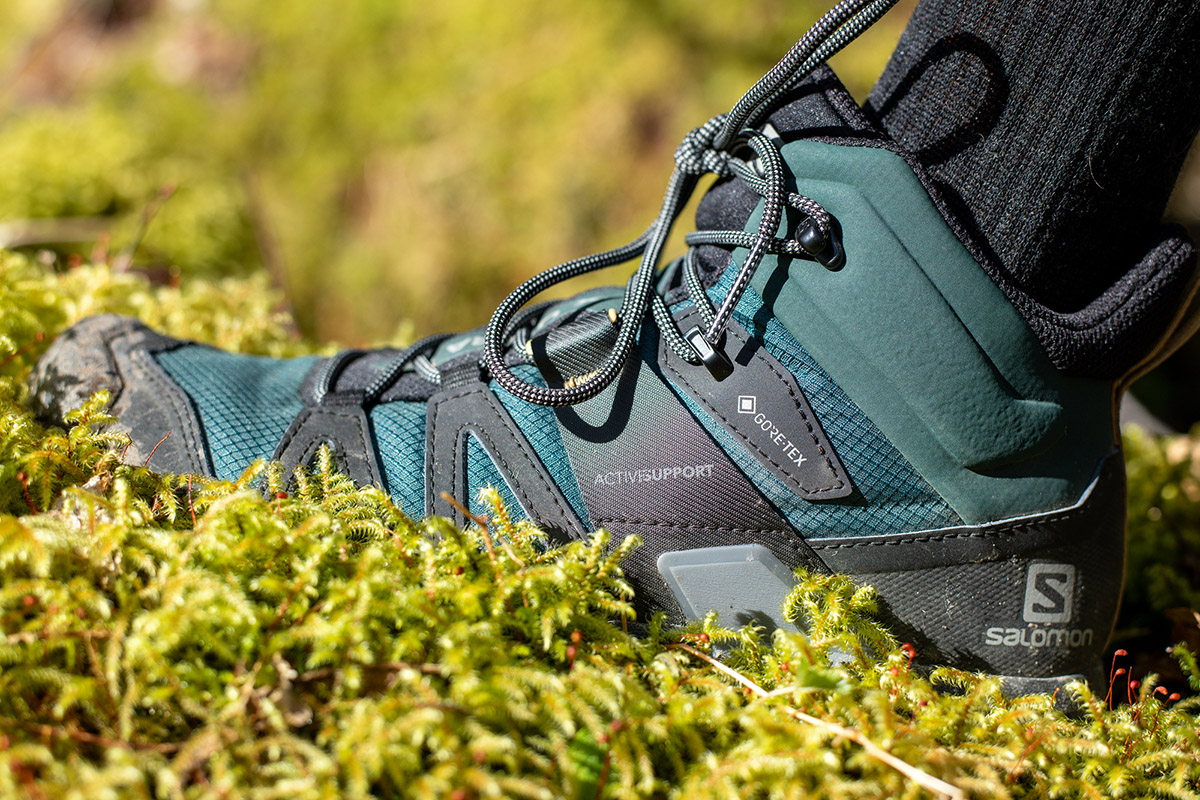
In terms of competitors, the X Ultra 4 remains a clear front runner, undercutting similarly built models like the Asolo Falcon GV (2 lbs. 2.6 oz.) and La Sportiva Nucleo High II GTX (2 lbs. 1.6 oz.). You can go lighter with a trimmed-down design like Salomon’s own Outpulse Mid GTX (1 lb. 10.8 oz.), but we’ve found that boot compromises significantly on durability when subjected to serious mileage and terrain. Other lightweight options include Danner’s Trail 2650 Mid GTX (1 lb. 12 oz.) and Vasque’s Breeze LT NTX (1 lb. 13 oz.), but again, we think the X Ultra offers the best balance of weight, comfort, and durability among that grouping.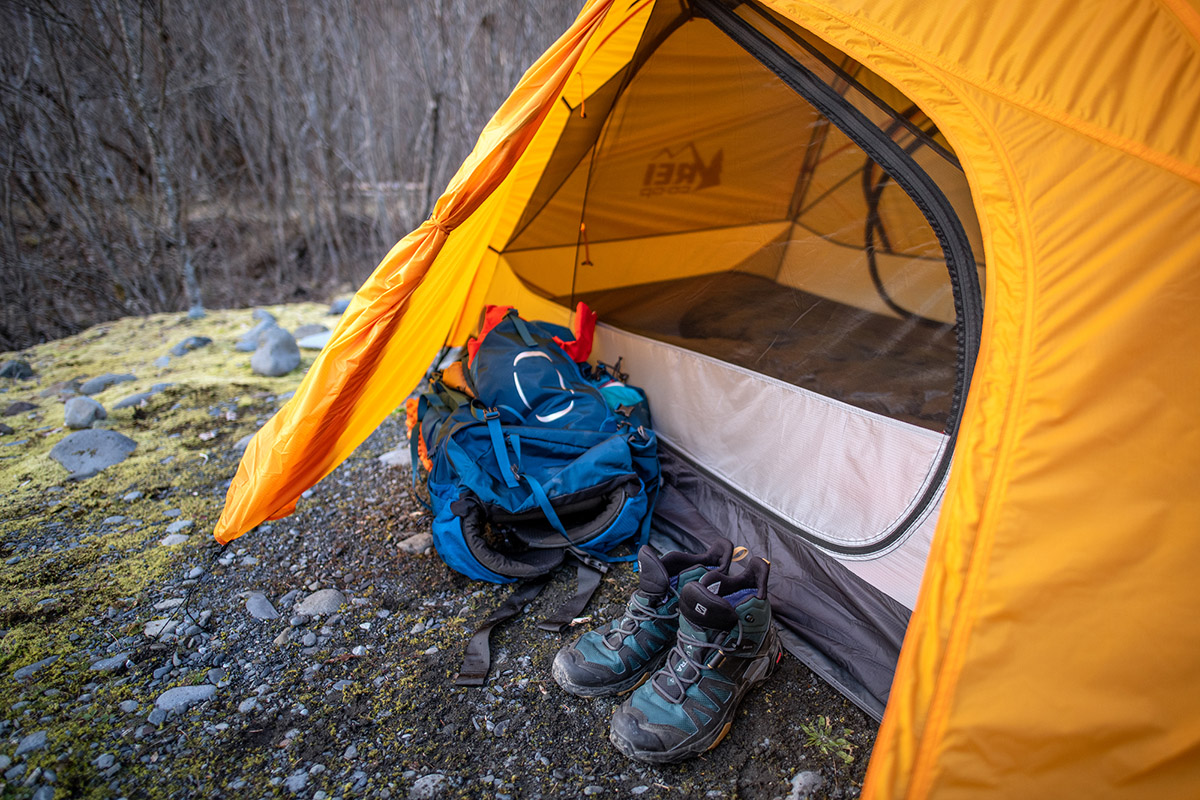
Like prior generations of the X Ultra, the latest model uses Salomon’s in-house Contagrip outsole design, although they did tweak the recipe slightly with a new “All Terrain” compound. Importantly, however, all-around performance remains largely the same: The chevron-shaped lugs are reasonably deep, confidence-inspiring across a range of terrain, and do a great job biting into surfaces without wearing down prematurely. Even in the sloppy and very wet conditions we faced in Hoh Rainforest, the X Ultra 4 gripped everything from deep mud to slippery roots and logs without issue (that quick and light feel also helped in these cases, giving it an athleticism that you rarely get with an over-the-ankle boot).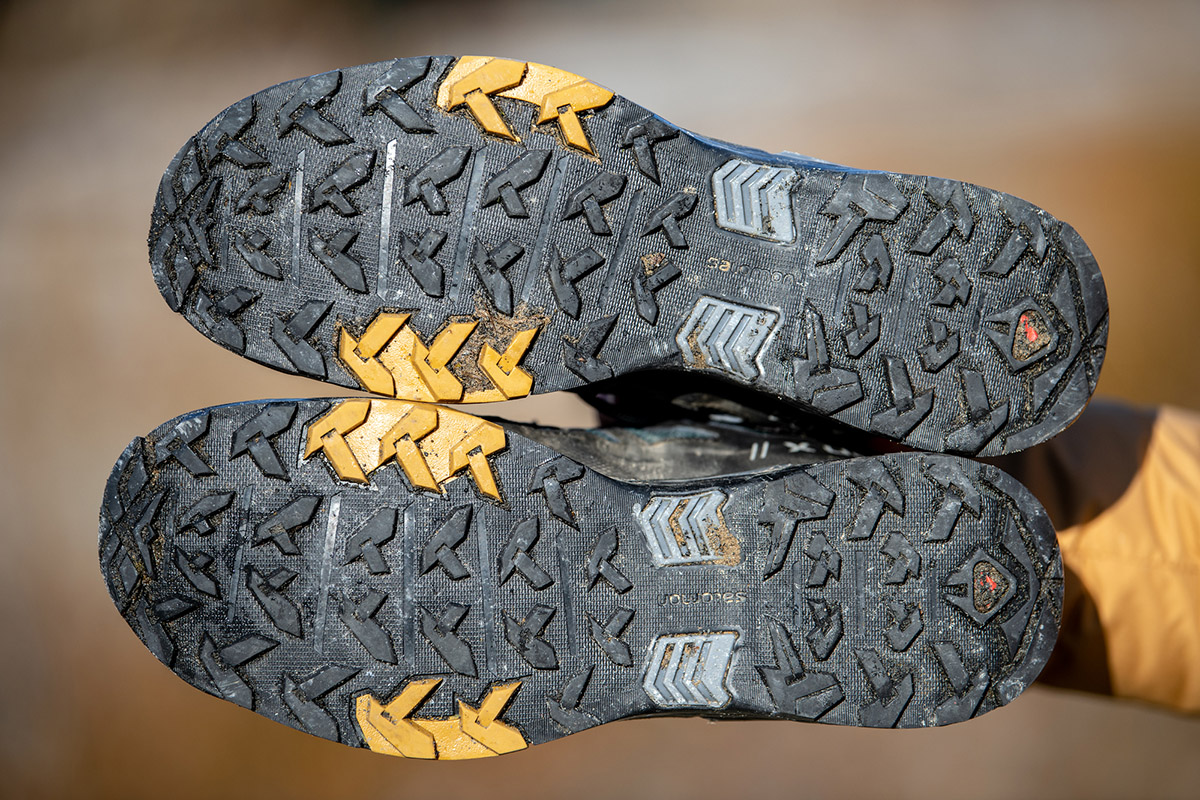
Put simply, the light and nimble X Ultra line will never be confused with a burly, traditional hiking boot, and that’s held true with the latest model. The top of the collar sits just above the ankle—and the cutouts behind actually make it dip down—and support here was sufficient even while hauling a fairly heavy backpacking pack (around 35 lbs. with all of my testing gear). This means that it’s not flimsy or loose-feeling like some of the lighter-weight, trail running-inspired models like Altra’s Lone Peak Hiker 2, but it’s noticeably less stiff and sturdy than options like Salomon’s Quest 4 or LOWA’s popular Renegade.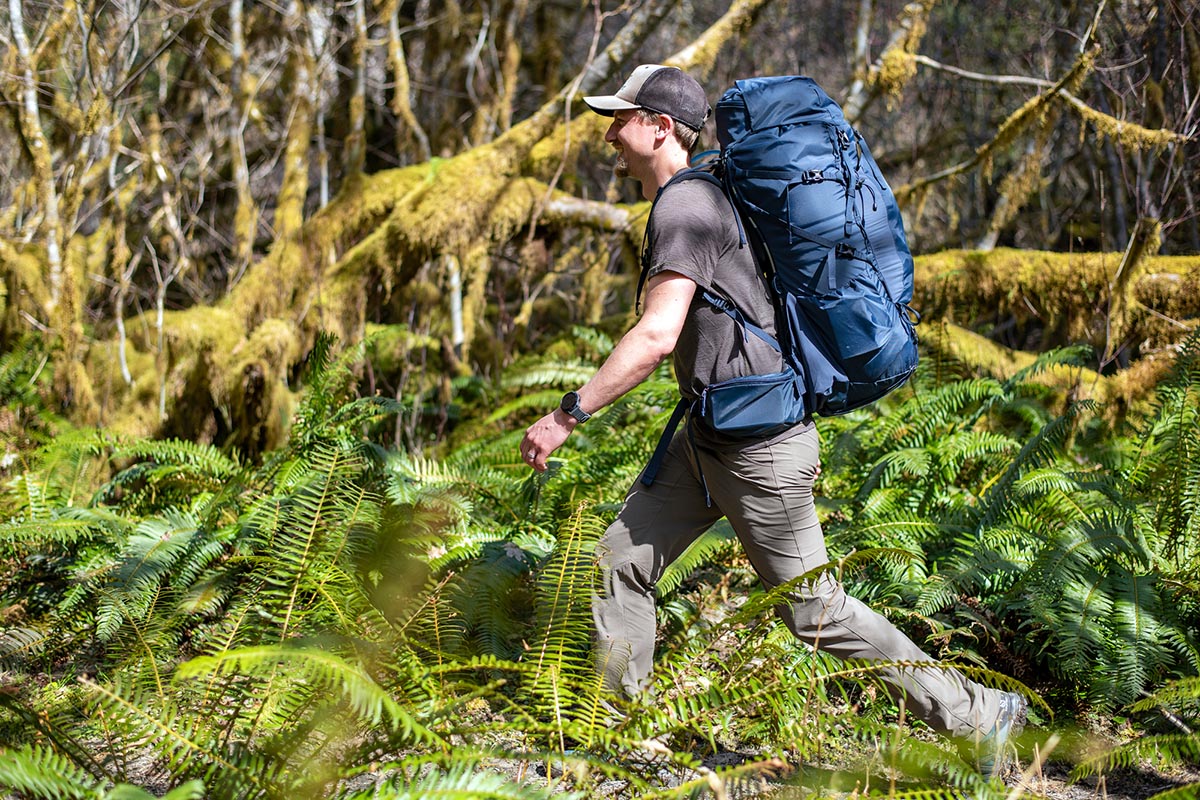
That said, Salomon did revamp the chassis with the X Ultra 4, and the highlight is a wing-like strap that integrates into the lacing system along the outside of the foot. Pulling the laces snug, you can actually feel it tighten, and it adds a nice dose of security for ankle rolls (it’s intended to reduce rolling to the outside). In practice, I found the boot plenty stable for my needs, and it should make most lightweight backpackers and hikers happy. But again, it’s pretty flexible underfoot and certainly wouldn’t be a top choice for those that prioritize support and protection for highly technical approaches that involve a heavy and large pack. In these cases, it’s worth stepping up to a more robust option like the aforementioned Quest or Scarpa’s Zodiac Plus GTX.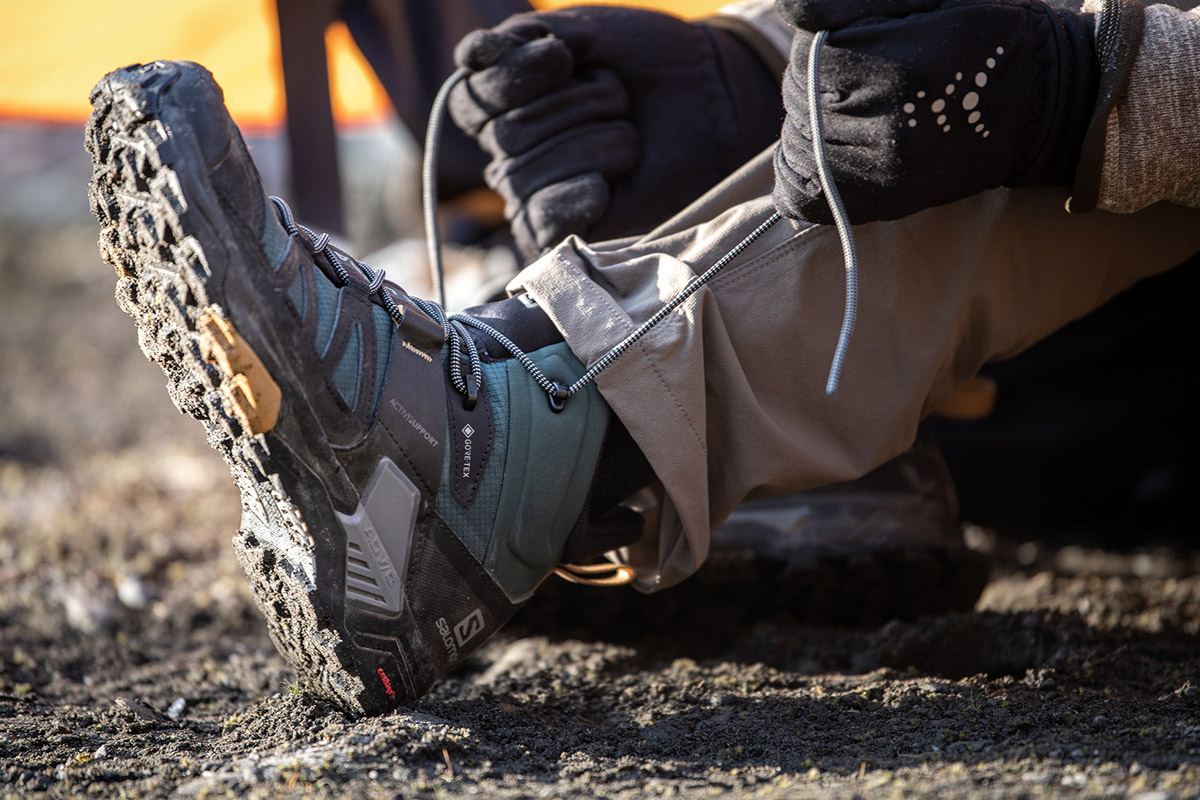
Despite an unseasonably dry spell during our trip in the Hoh Rainforest, I had ample opportunities to test out the Salomon X Ultra 4’s waterproofing. With creeks running high and deep and wet mud covering long sections of the trail, the Gore-Tex bootie was under a lot of duress but never failed or leaked. However, it’s important to note that the low ankle height of the boot means you’ll want to be very confident in the depth of the puddle or creek you’ll be crossing before stepping in, as water can easily pour in over the top. But strictly looking at materials, the water-resistant upper and proven Gore-Tex protection performed as expected, which was extremely well.
Breathability is an inherent tradeoff in selecting a waterproof boot, and despite the relatively thin construction throughout, you can expect the X Ultra 4 to run warm in the summer heat. On a positive note, my feet stayed comfortable on our spring backpacking trip, where temperatures ranged from the mid 20s all the way up into the high 50s Fahrenheit. And the waterproof membrane did enough to trap heat and offer a touch of warmth (when combined with thick hiking socks) for the cold at nighttime and in the early morning. If you do a lot of hiking in hotter conditions, however, it may be worth considering a non-waterproof design like Altra’s aforementioned Lone Peak Hiker 2 (unfortunately, Salomon no longer offers the X Ultra Mid without Gore-Tex, although there is a non-waterproof low-top option).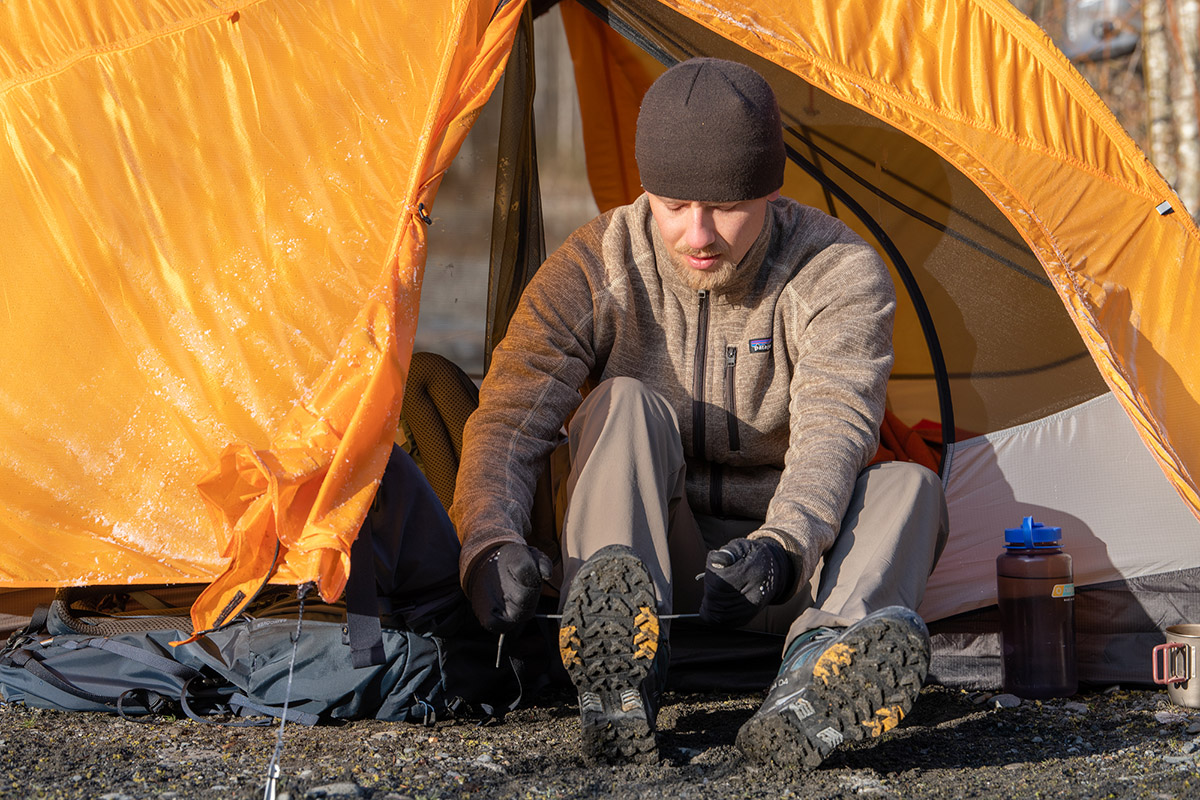
One of the main reasons to opt for a boot-height model is added protection, and the X Ultra 4 is nicely appointed here. The cushioning covers the heel and runs up and over the ankle, and—despite being on the thinner end of the spectrum—there’s enough padding to protect when sliding through tight spaces or knocking against rocks and trail debris. Finally, the toe cap is made of rubber and has proven to be impressively solid. I’ve had a few direct hits with roots on the trail and came away unscathed. The thin upper is one potential source of weakness, but that’s a fairly uncommon spot to come into serious contact with sharp and abrasive obstacles.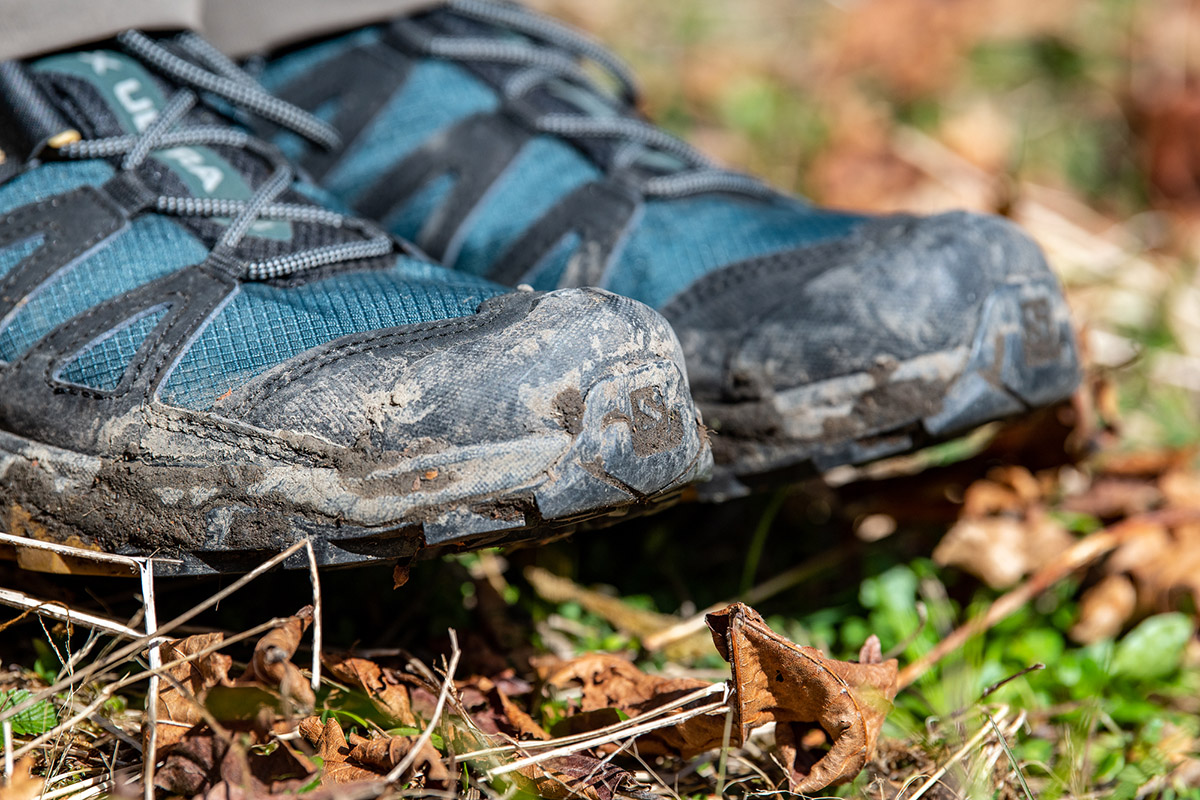
For the weight and price, Salomon’s X Ultra line has traditionally offered impressive levels of build quality and long-term durability. And the same appears true here: The latest model has a solid and well-made look and feel to it, and there have been no signs of premature wear throughout testing. The tread has worn down a bit, and the upper material has some minor fraying (the very muddy trails and subsequent cleaning took a light toll), but these are completely understandable outcomes given the use I’ve put the boots through. More trail miles will give me a better idea of the X Ultra 4’s long-term durability, but it’s worth pointing out that the boots have easily withstood the same terrain that ripped treads off my past-generation Merrell MQM Flex and tore back the toe cap on a pair of mid-height Altra Lone Peaks.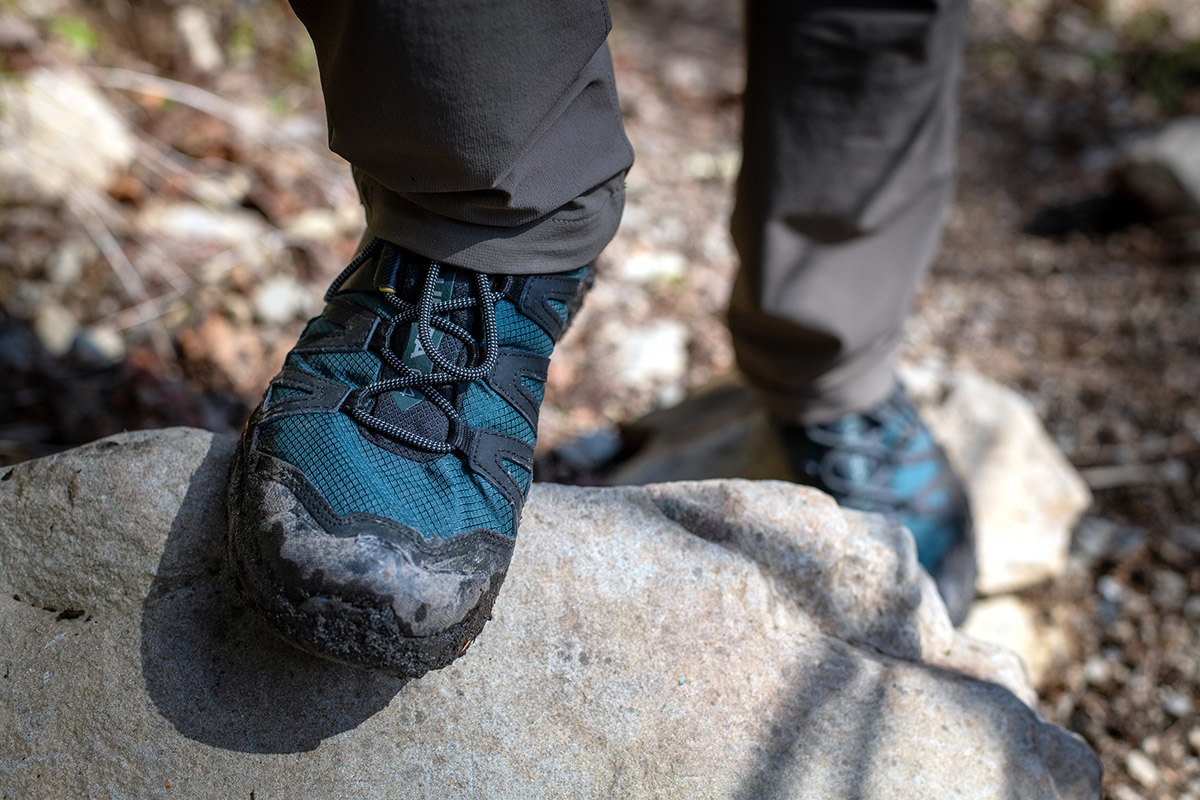
In terms of fit, the low-top version of the X Ultra 4 felt noticeably wider than the prior generation, while the higher-cut boot model tested here was very similar. In trying it on back-to-back with the X Ultra 3 Mid, the latest variation is a little roomier but still strikes me as slightly on the narrow side of average. Lengthwise, it’s been perfect in my standard men’s size 9, and I’ve found it easy to minimize heel slippage for extended climbs thanks to the snug heel and solid lacing system. Finally, it’s worth noting that the X Ultra 4 is offered in dedicated wide sizes, which is fairly uncommon in this price and weight range.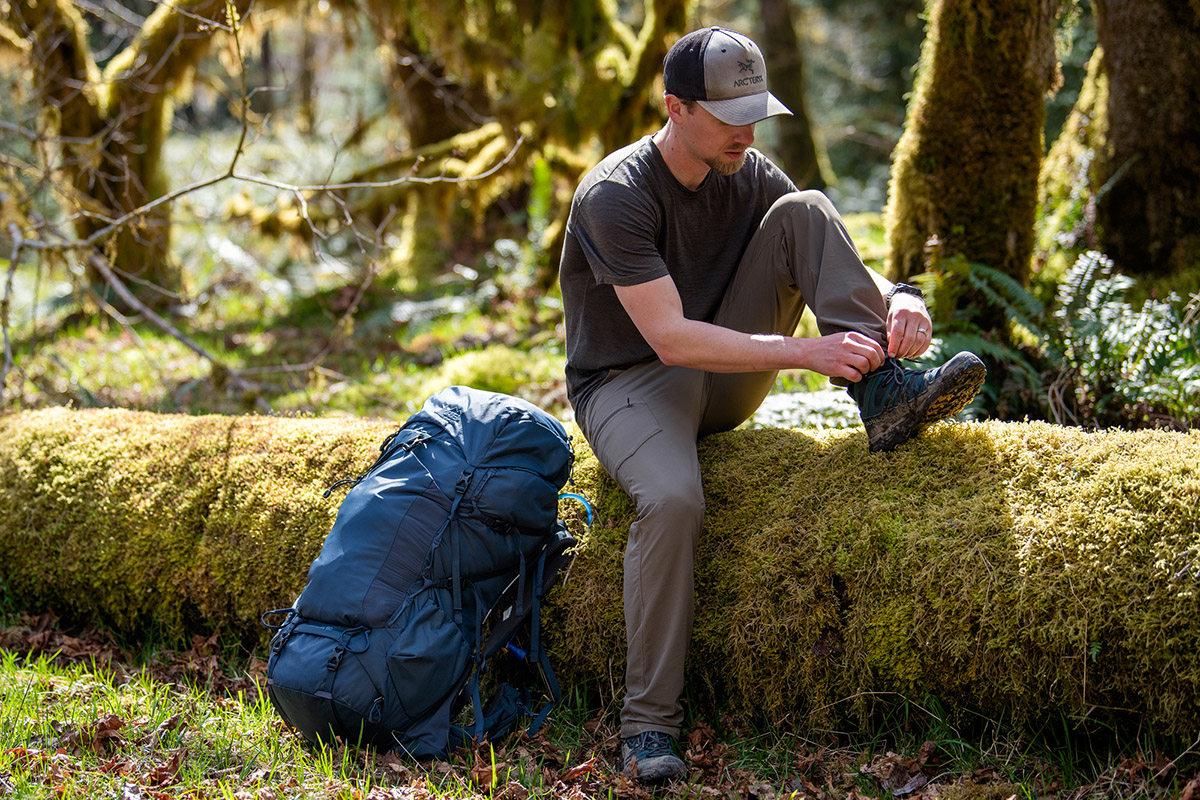
We brought Salomon’s X Ultra 4 Mid GTX backpacking in Washington’s Hoh Rainforest, and Salomon also released a few other variations. As we touched on above, we also tested the low-top version of the X Ultra 4 GTX, which costs and weighs less at $160 and 1 pound 11.5 ounces respectively and utilizes Salomon’s single-pull Quicklace system (for more information, see our X Ultra 4 GTX review). That shoe is also offered without waterproofing, which shaves off another $20 and around 2 ounces.
Importantly, all of the aforementioned designs are available in women’s versions for the same price (the main differences are in fit and colorways). In testing the women’s X Ultra 4 Mid GTX, we were similarly impressed by the boot’s light and nimble feel but found it to be noticeably lacking in ankle support and underfoot stability. Rounding out the collection is the X Ultra 4 Mid Winter, which tacks on a winter-ready outsole, gaiter hook, Salomon’s in-house ClimaSalomon waterproof membrane, and 200-gram Thinsulate insulation.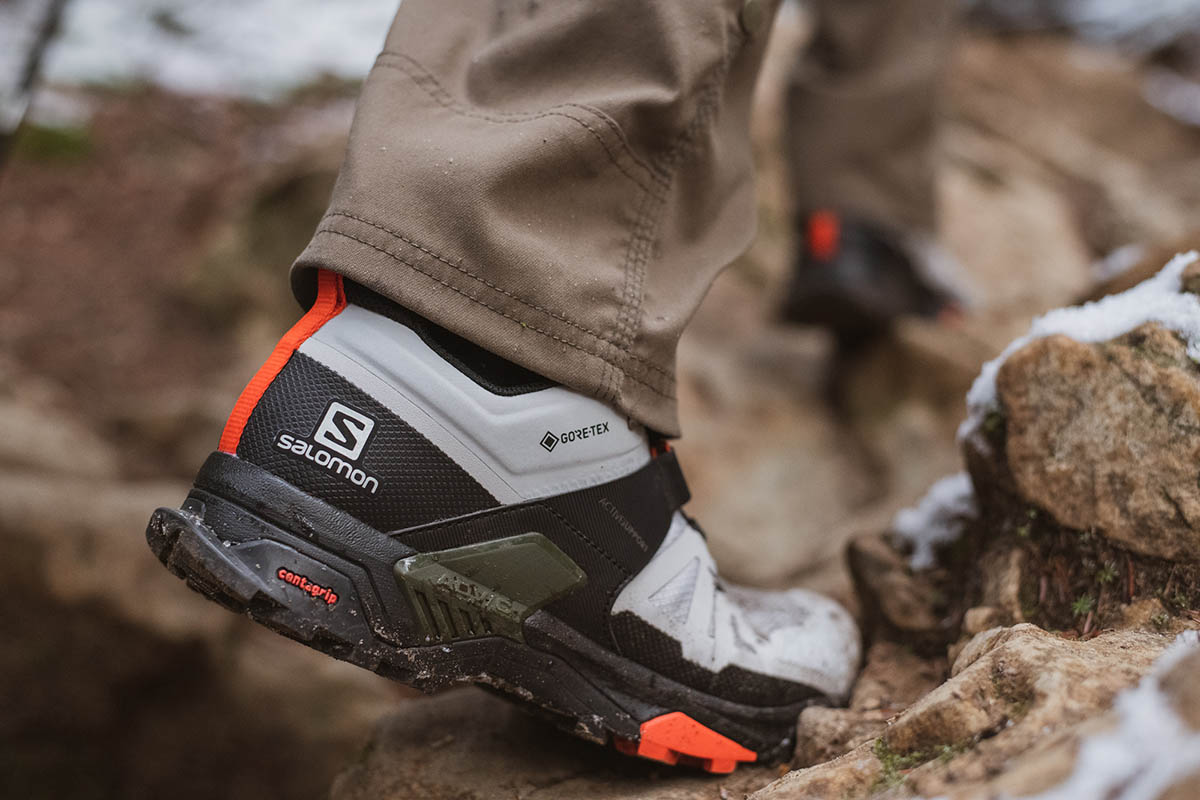
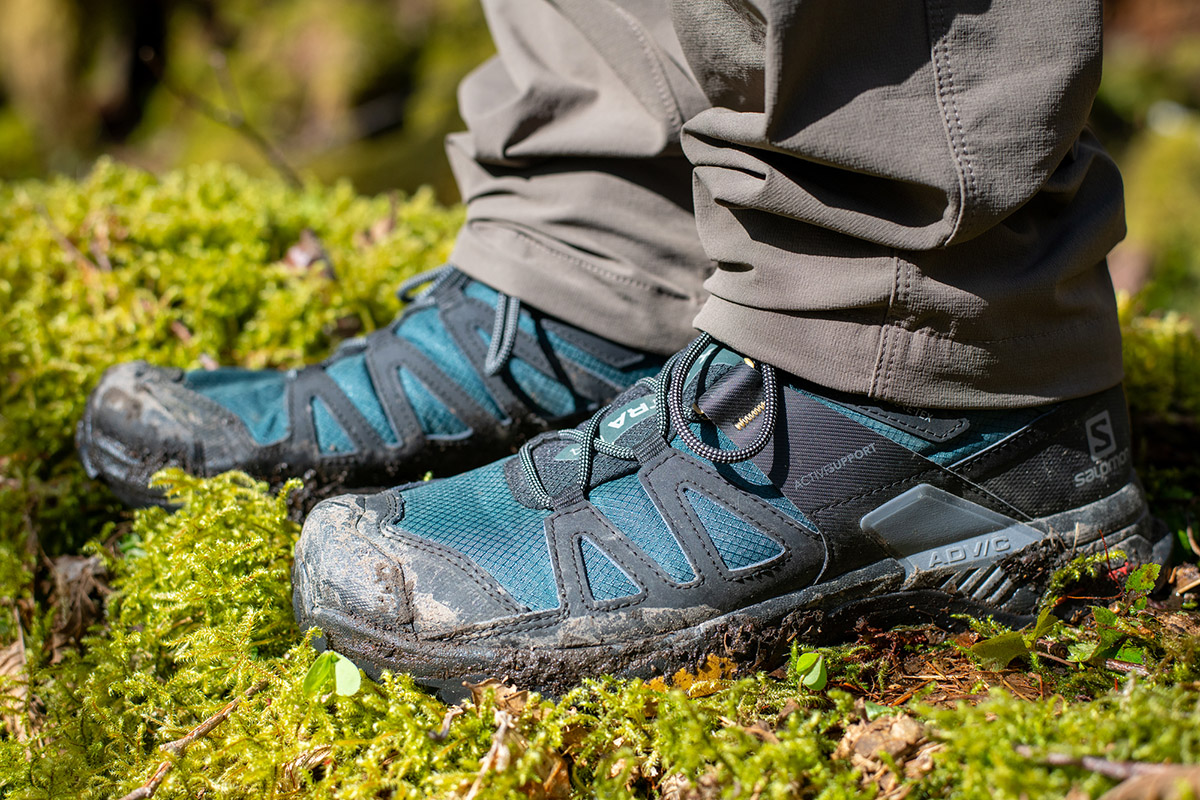
| Boot | Price | Category | Weight | Waterproof | Upper |
|---|---|---|---|---|---|
| Salomon X Ultra 4 Mid GTX | $175 | Lightweight | 1 lb. 14 oz. | Yes (Gore-Tex) | Leather / textile |
| Merrell Moab 3 Mid WP | $145 | Lightweight | 2 lb. 0.7 oz. | Yes (M Select) | Leather / mesh |
| Danner Trail 2650 Mid GTX | $200 | Lightweight | 1 lb. 12 oz. | Yes (Gore-Tex) | Leather / mesh |
| HOKA Anacapa Mid | $185 | Lightweight | 2 lb. 0 oz. | Yes (Gore-Tex) | Nubuck leather |
| Vasque Breeze LT NTX | $180 | Lightweight | 1 lb. 13 oz. | Yes (Nature-Tex) | Mesh / suede |
| Salomon Outpulse Mid GTX | $160 | Lightweight | 1 lb. 10.8 oz. | Yes (Gore-Tex) | Synthetic |
| Salomon Quest 4 GTX | $230 | Midweight | 2 lb. 14.2 oz. | Yes (Gore-Tex) | Leather / textile |
Salomon’s X Ultra line has been at the top of our hiking boot round-up for years, and the latest version carries the torch with an excellent balance of weight, comfort, and durability. However, there’s no shortage of competition in 2023, and Merrell’s Moab Mid WP (now in its third iteration) remains a popular pick year after year. Stacked up against the Salomon, the Moab 3 offers more generous all-around cushioning, especially underfoot (this translates to better isolation from the ground). That said, the Salomon wins out in weight by around 3 ounces per pair, has a more modern and athletic feel, and uses more premium materials. The Moab will save you $30 (and they sell a non-waterproof variation), but the X Ultra 4 is the more well-rounded option.
Another lightweight hiker to consider is Danner’s Trail 2650 Mid GTX. Like the X Ultra, the Danner offers great traction and protection in a feathery (1 lb. 12 oz.) package. We also love the sleek and modern look, which translates well for around-town use and casual wear. But the praise mostly stops there: The Danner falls short of the X Ultra in support and stability (it felt fairly floppy throughout testing), isn’t as comfortable during long days on the trail, and runs long and narrow, which made nailing the fit pretty tough for us (we also found the wide version to be too roomy). In the end, the Trail 2650 is a good-looking and slightly lighter alternative to the Salomon, but it’s far less competitive from a performance standpoint and costs $25 more to boot.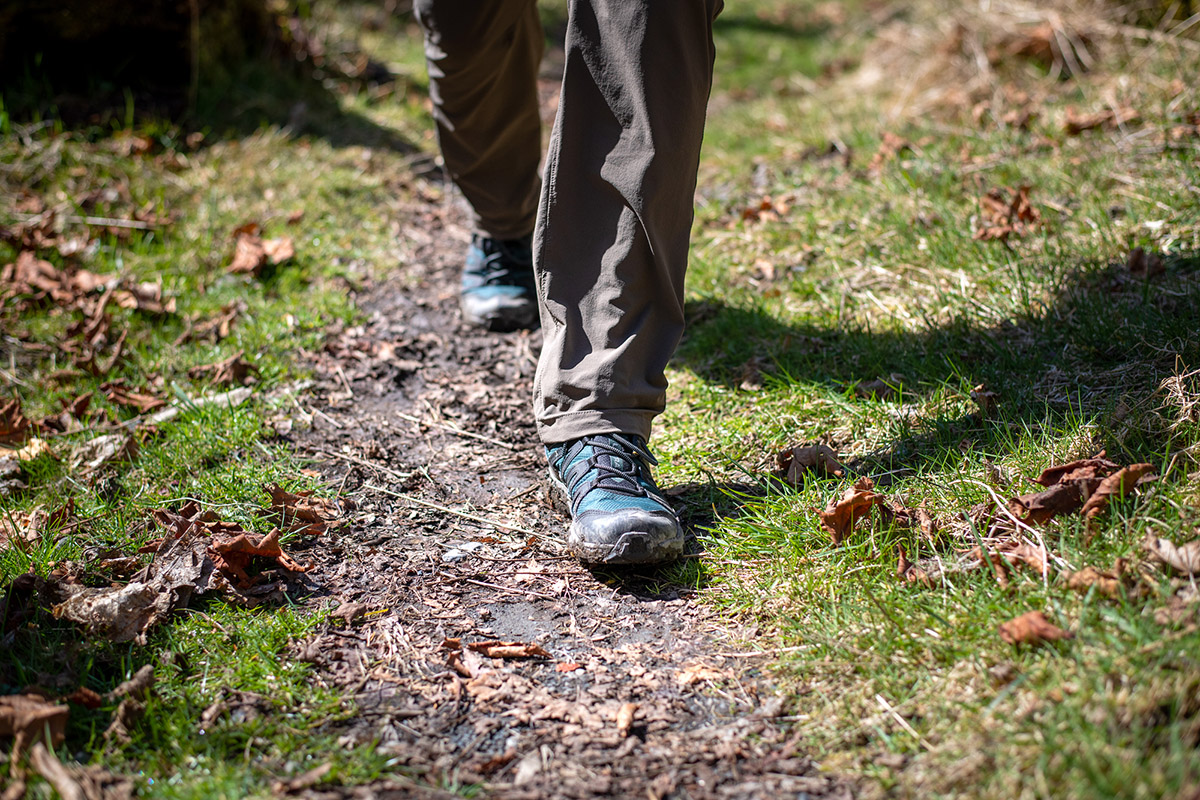
HOKA is best known for their lineup of max-cushioned trail and road running shoes, but they have a growing and very competitive hiking collection. We especially like their Anacapa Mid GTX, which retains the comfort-first and well-padded build of their running models in a mid-height boot. All in all, we found the Anacapa to be impressively sprightly on the trail, well fitting with an accommodating but secure shape and customizable lacing system, and highly comfortable for long days out. That said, the HOKA falls short of the X Ultra 4 in both stability and grip, and it won’t stand up as well to long-term use (especially over rugged terrain or while carrying a heavy load). Given these concerns—plus the Anacapa’s higher weight and price—we give the nod to the Salomon as the better-built boot.
In the same fast-and-light category as the HOKA Anacapa, Vasque's Breeze LT NTX is another design to have on your radar. Like the Anacapa, the Vasque has an agile, trail runner-like feel (it weighs 1 lb. 13 oz. per pair) and features a grippy Vibram outsole for traction. That said, while testing the past-generation version of the Breeze LT—which is largely identical to the newer model—in the Grand Canyon, we came away with one serious concern: durability. After only around 15 miles of hiking, the thin rand along the inside of the boot began separating from the upper, which goes to show how shaving weight can impact overall longevity. The X Ultra 4 is slightly heavier than the Vasque, but the boost in durability is worth that tradeoff, in our opinion.
From within Salomon’s own lineup, the Outpulse Mid GTX has similar intentions as the X Ultra 4 Mid. Both shoes are light (the Outpulse checks in at 1 lb. 10.8 oz.), flexible, and feature grippy Contagrip outsoles and premium Gore-Tex waterproofing. However, in testing the Outpulse, we found that the boot had a fairly sloppy and loose feel due to the added room around the ankle, and the single locking eyelet at the collar made it hard to achieve a secure fit. Additionally, the knit-like upper is decidedly thin and more susceptible to snags and abrasion than the X Ultra 4’s leather and textile construction, and there are noticeable gaps where the toe cap connects to the rest of the upper (for more information, see our in-depth Outpulse review here). Similar to our experiences with the Vasque and HOKA options above, we do appreciate the Outpulse’s running shoe-like feel and modern looks, but the X Ultra 4 is the more proven and well-built option.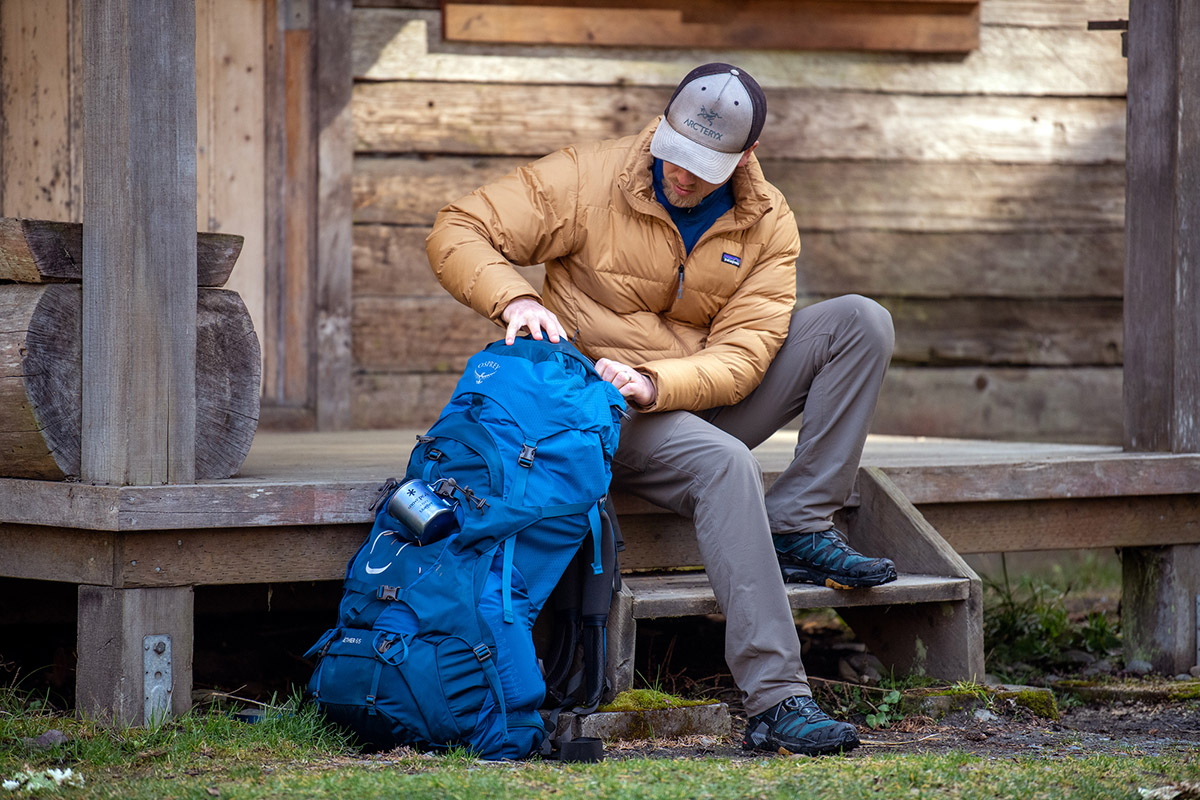
Last but not least is another Salomon design to consider: their Quest 4 GTX. As we touched on above, the Quest is the burlier option of the two and a better match for shuttling a heavy load over rough and rocky terrain. In particular, it’s noticeably stiffer than the X Ultra 4, has a taller ankle height and more aggressive stance, and boasts added underfoot padding and protection that minimizes foot fatigue over long distances. The biggest tradeoff is an increase in weight, with the Quest clocking in at a fairly hefty 2 pounds 14.2 ounces (a full pound heavier than the X Ultra). This isn’t a huge deterrent for demanding hikes and backpacking trips that involve off-trail adventuring with a full pack, but those who want to move fast and light on well-maintained trails will find it overkill. For these folks, the X Ultra 4 is plenty of boot and will save you a significant $55.
If you’re thinking about buying gear that we’ve reviewed on Switchback Travel, you can help support us in the process. Just click on any of the seller links above, and if you make a purchase, we receive a small percentage of the transaction. The cost of the product is the same to you but this helps us continue to test and write about outdoor gear. Thanks and we appreciate your support!
Depending on the seller, most products ship free in the United States on orders of $50 or more. International shipping availability and rates vary by seller. The pricing information on this page is updated hourly but we are not responsible for inaccuracies.